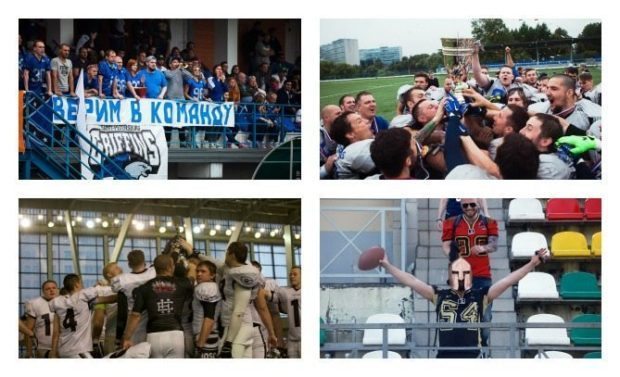Football has been rapidly growing in everywhere in Russia for the past ten years, going from a couple of teams in Moscow to a sport that is present in almost every city and region of the world’s largest country.
However, the competitive and organizational structure that governed the sport failed to effectively manage such an expansion, and one of the major goals for further development of football in Russia was deemed to transform its quantitative growth into a qualitative one in 2015. Hence, a new Competition Committee was formed within the Federation of American Football of Russia (FAFR), headed by ex-soccer official Artyom Polyakov with a clear task of reforming the structures and policies of the Championship and bringing them closer to the professional level. And although at quite a cost, but significant progress was made in that regard.
Most importantly, very strict requirements were imposed on the teams participating in the Championship, particularly the ones in the “Big 5” (or Premier Division) – live broadcasts of all the games, stricter uniform regulation and the like, all aimed at making football in Russia a more marketable product that would make a better potential investment.
And while these measures drastically improved how well the game looked to the fans, it also excluded many teams that could afford it from playing in the Championship series, bringing the total number of teams down to 15 – the others were left with only regional Bowl-style tournaments to compete in.
The other part of the changes had to do with the competitive structure itself, which now combined both the elements of regional and quality division of teams. The participants were divided into 3 regional divisions – Volga, won by the Podolsk Knights; Urals, won by the Ekaterinburg Lightnings; and Black Sea, won by the Sevastopol Titans – as well as the Premier Division (Big 5, won by the Moscow Patriots), which joined them in the same playoff bracket – just at a later stage. This provided many more close and competitive games in the course of the regular season, further pushing teams to improve their quality of play. In addition, a short knockout tournament called the Russian Cup was held after the Championship (won by the Moscow Black Storm), giving the teams that failed to achieve their goals during the main competition another chance.
Although these measures were only implemented through a lot of growing pains, they established a very clear long-term framework for all the teams to devise their development plans around. And this clear long-term strategy has gathered overwhelmingly positive feedback and will likely stay as the cornerstone for the future development of the sport in Russia.
From the competitive standpoint, the St. Petersburg Griffins dethroned the most successful team in Russia in the Moscow Patriots after having progressively gotten closer to that for the past several years. Becoming the first team outside of Moscow to win the national title, they also signify the growth of the quality of the game throughout the country, as the teams from the capital (and the birthplace of the sport in this country) have never been rivaled by anyone in the years prior. Another example of that was that the national team (which shut out Norway 20-0 in their EC Group B qualifier) was as representative as never before, with less than half of it composed of the championship club for the first time ever.
So after everything was said and done, 2015 seemed like a truly breakthrough year for American football in Russia, establishing a clear momentum for the sport’s development moving forward. With better fan outreach, an improved competitive structure as well as Russian teams set to participate in both national and club level international tournaments in 2016, the football community here truly has a lot to look forward to.

